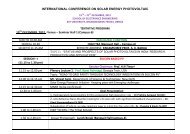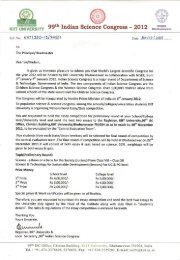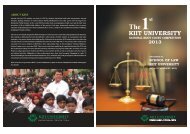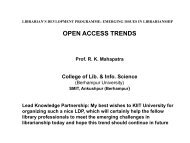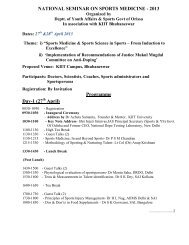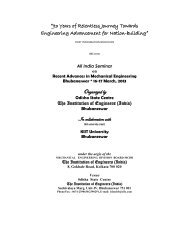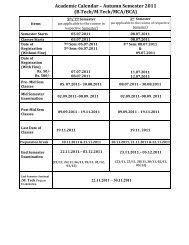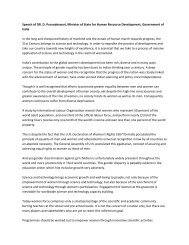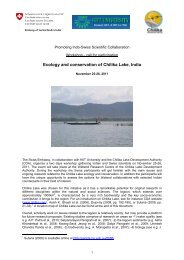PANEL ORGAN - KIIT University
PANEL ORGAN - KIIT University
PANEL ORGAN - KIIT University
Create successful ePaper yourself
Turn your PDF publications into a flip-book with our unique Google optimized e-Paper software.
management. Natural Disaster is the consequence of a Natural hazard for instance<br />
volcanic eruption, earthquake, floods, draught, the most common in Nigeria are flood,<br />
draught, wild wind storm or sandstorm, erosion, etc. Disasters occur when hazards meet<br />
the vulnerability of the children. This study tends to look at the social and economic<br />
effect of natural disaster on children in some part of Nigeria in West Africa.<br />
KARIM, A.H.M., Zehaduland Islam, M. Zulfiquar Ali, International Islamic <strong>University</strong><br />
Malaysia, Gombak, Kuala Lumpur, Malaysia, E-mail: <br />
Flood Affected Children in Rural Bangladesh: Questions of Rights and Privileges<br />
The unprecedented flood in Bangladesh recurrently destroys enormous crops and<br />
settlements in the country. This devastating flood is also the principal contributor for<br />
many physical changes in the riverine areas, and consequently it intensities heavy pressure<br />
on the rural areas of the country. Riverbank erosion thus, annually compels a huge number<br />
of its poverty-stricken people to leave their houses, and as such, forcing them to take<br />
shelter to a comparatively safe neighboring place. Flood becomes so disastrous that it<br />
often spoils the rural communication disrupts its total road-linkages, putting the people<br />
with heavy pressure socially and economically. Because of this disruption, the children<br />
from the affected families have to stay at home, remaining fully detached from their<br />
schools and education. They become the victim of circumstances, where their sociocultural<br />
rights and privileges remain fully unprotected and ignored. Children remain<br />
uncared in regard to having access to food and nutrition, where in many cases, they do not<br />
even get proper health care facilities. This paper thus, attempts to make an assessment of<br />
the socio-cultural situation of the flood affected children, and explores in details about<br />
their problems relating to their rights and privileges. The paper will provide contextual<br />
ethnographic data from a village located in the northern part of Bangladesh and<br />
accordingly, will raise the critical issues related to children’s rights and privileges during<br />
such environmental disaster.<br />
KHAN, Amir Ali* and Shagufta Naseem Khan**, *National Institute of Disaster<br />
Management, 5B, Indraprastha Estate, Ring Road, New Delhi -110002, India, **Freelance<br />
Consultant, Working for Child Rights in Disaster Risk Reduction. E-mail:<br />
*, **<br />
Child Rights to Disaster Safety – Case Study of School Safety Programme in Delhi<br />
Among various rights, children have the right to safe, healthy and conducive environment<br />
for education. It has been documented from the past disasters that school buildings had<br />
been destroyed due to earthquakes and other natural disasters throughout the world,<br />
causing deaths to large number of students, teachers and other functionaries of the<br />
schools. Few of the prominent earthquakes like Sichuan (2008), Kashmir (2005), Bam<br />
(2003), Bhuj (2001) and Armenia (1988) had caused huge devastations to the school<br />
buildings taking away thousands of precious lives of school going children and teachers.<br />
Schools provide tremendous opportunity in developing the culture of preparedness and<br />
culture of prevention against hazards like fire and earthquakes. Similarly, resources<br />
available with schools like buildings can be utilized for emergency shelters and relief<br />
centers. Vulnerability of schools in Delhi is quite high, where schools are being run in all<br />
sorts of buildings and premises with limited know-how about disasters safe construction.<br />
Government of Delhi is making an attempt to reduce the vulnerability of schools by taking<br />
structural and nonstructural measures at school levels. The paper explores the efforts of<br />
the state government in dealing with the situation. It also draws attention to all those<br />
nonstructural mitigation measures which come with little effort and are least costly, but




